Conquering the Art of Packing with these 7 top tips.
When you begin to conquer the art of packing, it is not something that happens overnight for many, sometimes it takes years and several trips. Believe me I am living proof of this, on my first trip overseas (solo) I was allowed 32 kg (50lb) & I took it. So here I was dragging a large bag, carry on and my oversized handbag, it was SO over the top. I still laugh at the silliness in my packing as it was only for two weeks. There were parts of the bag I didn’t even go into…
This however motivated me to get more ruthless in my thinking “DO I REALLY NEED” that thing… As we have travelled more and even the very next time whilst the luggage was reduced there were still things we never used. Here is the point that to ‘Conquer the art of packing‘ became my own personal a mission.
On a bright note I follow the practice makes perfect theory. So more trips, more packing practice. I also had a couple of revelations when packing for our last 6+week trip and multiple destinations (yes still had things not used in the bags, though much less).
- I am never going to be a carry on (cabin) bag only person (when travelling overseas)
- It didn’t matter if I wore the same thing twice in a week.
These revelations started the creation of a system. Now it may not be a ground breaking ‘new’ system but it works for us. I want to share this in the hopes that if you also struggle it will help you conquer the art of packing as well.
The System is easy, consider your; Where-When-What-How
*Disclosure: We may have affiliate links with one or more of these companies mentioned & may receive a small commission, at no extra cost to you, if you make a purchase through a link. Please see our full disclosures for further information.
Preview – 7 Great Tips to Conquer the Art of Packing
The preview, gives a brief overview of each of the 7 best tips to conquer the art of packing. Tips formed by the system we now use religiously. After many attempts and finding numerous ways of how NOT to pack for a trip. Follow the links for more information about planning your next adventure, budget or starting to create your perfect itinerary.
- Destination – Weather and Climate – (Where-When) what you pack depends greatly on where you are going and the climate at your desired destination
- Types of Activities (What you are doing) – outlines how different activities can influence what items are required
- Type and Style of Luggage (What type of luggage) – gives a brief outline of different types and styles of luggage available
- Length of trip (How long) – how long you are going for, can greatly impact how much you have to pack and the type of luggage required
- Minimalistic Packing – summarises how to achieve and plan to pack with a variety packing lists and information.
- Packing Style (How) – the style in how you choose to pack your luggage, can greatly affect the size of luggage required
- Before you take off – a brief look at what is needed before and at the departure terminal. Whether you are travelling by plane, train, boat, bus or even car.
Destination – Weather and Climate
Once you have chosen your destination or destinations. It’s time to consider what you ‘need’ to pack. If travelling to more than one destination, it’s prudent to check for each.
Knowing the climate and weather for your destination is one of the first things you should consider, to conquer the art of packing. This knowledge assists you in knowing what you need to pack or at least the basics. Plan your next Adventure briefly outlines the basics of seasons for each hemisphere. You can also get current weather information from the World Weather Information Service.
You also need to think about where you are leaving from, ensuring you have appropriate clothing for your return. To conquer the art of packing this really only needs to be considered if travelling to a destination colder or warmer than the one you are leaving.
For example, for we live in the Southern hemisphere. When travelling to the northern hemisphere we always have appropriate clothes for the return journey. TO conquer the art of packing that means a coat in winter, light shirts and tops in summer. Additionally, we usually dress or have an appropriate change for the season we are travelling to in our carry-on luggage.
The weather and climate may also need to be considered if just travelling within the same country. For example travelling from New York to Los Angeles in winter, would require some considerations to your packing.
Our travel checklists, are the first step to start your independent travelling & conquer the art of packing. Start building your own Destination ‘DO’ List, or prioritise the one you have.
Checklists for:
- Your destination DO List
- before you travel
- see and do notes
- carry on packing list – warm and cold climate
- checked in packing list – warm and cold climate
Types of Activities
The types of activities you plan to do, greatly contribute to being able to conquer the art of packing. This is due to any special equipment, clothing and accessories you need to pack for the activity. Even when taking a road trip, to conquer the art of packing of a vehicle for various activities can be a logistical challenge. A bit like playing a game of Tetris.
Consider your options before looking into the space required to take activity equipment. Many enthusiasts whether it in the sea, snow, on the course or riding along mountain tracks prefer to take their own equipment. So, ask yourself some questions first.
- Is it imperative or preferred, you take your personal items?
- Can you hire the equipment at your destination?
- Are you able to purchase some of the equipment once at your destination?
As an example, if you are travelling to the snow for a one time trip. Will you re-use items that you purchase e.g. water/snow proof clothing, snowboards or skis etc? If not consider, hiring your equipment or part there of once at your destination. This question can also be asked for the use of bikes, kayaks, surf boards or other water sports equipment. If you desire to take your own equipment or it’s a requirement for the activity you are travelling for. Many manufacturers of equipment also have specialised bags, which can help you greatly to conquer the art of packing.
If it’s preferred or desired to take your own, know your limits, check oversized baggage costs and make allowances accordingly.
Before going further, I have to state here, we are not back packers or campers. So ‘our’ choices in luggage will on all accounts differ from those of you reading this that are. However, the system to conquer the art of packing, is still relevant no matter your personal choice of bag.
Types and Style Luggage
The type and style of luggage you take is a purely personal choice and there are pros and cons for both. In fact, there are many articles written about the pros and cons of backpack/duffle bag, carry-on (cabin) luggage only vs roller bags and checked in luggage. One of the biggest cons noted for roller bags is the wheels break on the cobblestone streets of Europe. I have to say we have had several trips to Europe and never had a wheel break when wheeling across the cobblestones.
So, one of the main questions you have to ask to conquer the art of packing is. Which are you most comfortable with and where are you travelling? As I can assure you if I was to ever actually go camping, I would have a backpack. I am shaking my head and smiling as I write that, thinking ‘glamping‘ is as close as I will get to camping.
It’s been our experience, that a mix of backpacks and hard-shell luggage works well for us to conquer the art of packing. However, this is dependent on a few factors. Yes, you guessed it depending on the Where-When-What-How (Long) is the system we use to decide the type and style of luggage.
Type
There’s a plethora of luggage types you can choose from, some of which are highlighted below. Our main choice no matter the length of time we travel is at least one piece of hard-shell roller luggage. Though as mentioned above we use a mix of types depending on length of travel and activities we are doing.
This is a personal choice based on a few factors the main one being, large back packs and duffle bags are a strain on our backs (even with the supports). In addition to being awkward to carry distances from arrival port to accommodations. Though there are now backpacks and duffle bags with wheels, so if that’s your choice when you think are looking to conquer the art of packing. You can have the best of both worlds
Our travel checklists, are the first step to start your independent travelling & conquer the art of packing. Start building your own Destination ‘DO’ List, or prioritise the one you have.
Checklists for:
- Your destination DO List
- before you travel
- see and do notes
- carry on packing list – warm and cold climate
- checked in packing list – warm and cold climate
Durability
Another important factor to conquer the art of packing, especially if travelling through various ports and different modes of transportation. As you will discover, not all baggage handlers are equal, some gently place (a) and some toss (b). Having had several variations to the styles of bags we use over the last 15yrs. We currently choose hard-shell roller bags, as our main luggage. Its been our experience these are more resilient, in addition to giving some peace of mind if you get a type (b) baggage handler or maybe that’s just me…
However, you will also find many soft-shell luggage has some reinforcement as do the better quality backpacks, so once again it comes down to personal choice, type of travel and activities you are doing.
Size
In the case of luggage, the size does matter, especially if travelling by air and in some cases train or bus. This is mostly due to the set limits of cartage, by various carriers and very important to conquer the art of packing. However, even that can vary and not only between carrier. With airline frequent flyer programme, the top tiers often have access to an extra bag allowance. Which can apply for both carry-on and checked baggage, in some instances. Though the weight limits to the extra bags still applies.
Whether it’s hard-shell or soft-shell luggage with or without rollers you will find there are three standard sizes (pictured below). That said, some suitcases even hard-shells have the ability to expand in depth this is usually 2-2.5cm or approximately 1 inch.
- The capacity in litres for these suitcases are approximate, Large: 131/139L Medium: 82/88L and Small 40/43L.
The sizing of backpacks and duffel bags are based on capacity. To ensure you are within the limits of your chosen carriers it is prudent to match the limits above.
- Capacity of popular backpacks Large: 70-85L Medium: 50-65L and Small: 30-40L,
- Capacity of popular duffel bags come in four sizes, Ex-Large: 100-150, Large: 70-95L, Medium: 50-75 and Small: 30-40.
Capacity of backpacks and duffel bags, varies between style and manufacturer.
Based on the capacities for suitcases above backpacks and duffle bags are well within the three standard sizes. Though it’s prudent to ‘Check your Limits’ before you go.
Note: Sizes and capacity can vary slightly depending on manufacturer.
Length of Trip
The length of the trip you are about to take can greatly assist you conquer the art of packing in the amount you have to pack and the luggage required. As an example, if you are just off for a weekend away a carry-on (cabin) bag or backpack should be sufficient per person. It has become our experience that for a weekend away we can usually have a carry-on (cabin) bag between us.
For longer trips of 5 plus days the luggage requirements can vary depending on the activities and destination as previously mentioned. However, with our checklists, we have been able to conquer the art of packing, thus reducing the amount of luggage we take. Even when travelling for extended periods of time (over 6 weeks) we have been able to limit our luggage to one carry-on (cabin) bag each and a medium bag (60cm/24in) between us. We also always travel with at least one back pack for day trips.
This is achievable by doing a bit of planning for your trips. Following some simple steps to create an itinerary perfect for you, your destination and travelling companions. This essentially assists in limiting the amount of clothing required, which in turn helps conquer the art of packing.
Minimalistic Art of Packing
So, what is our secret for being minimalistic, to conquer art of packing you ask…‘Less is More’
Basically, it’s a system that follows this concept that has allowed us to travel for over a month to 6 different countries with a minimum 5-7 complete outfits. As I have mentioned before this is not a new concept and is currently labelled as a ‘capsule wardrobe’. Though if you are my age you may still call it a ‘mix and match’ wardrobe.
To us the most important thing is to have quality garments, that are somewhat wrinkle free. Though I can never resist an article of clothing made of linen and usually pack one…oopps there goes my wrinkle free wardrobe.
Checklists are your Friend
These are the most important things I use to conquer the art of packing. They keep me on track and also on the minimalistic packing target. The checklists are very comprehensive covering carry-on and checked baggage based on packing for warm-hot and cool-cold climates. With the carry-on checklist also being able to be utilised for an overnight trip.
These are broken up into different categories, if there is a category you don’t require it can just be left out. Additionally, the checked baggage checklists giving guidance on the suggested amount of items to pack based on the number of days you will be travelling. So you will never over pack again.
We have additional information on packing for a cold climate destinations, this goes into layers. Though it can still easily be achieved within the checklists. Remember ‘Less is More’!!
Essentials
Where limits allow pack the majority of your essential items in carry-on luggage. Both checklists have an essentials category and allow for additions, if you have extra items you require. Once again this is up to personal preference as one persons ‘essential’ item may not be another’s.
Documents
All essential documentation, such as tickets, itineraries, passports (if travelling overseas) and any letters from doctors (for medication) etc go in our hand luggage, which most times for us is a backpack. This can then double as a daypack once you arrive at your destination and begin to explore. Additionally, our checklists also cover the things you need to do before leaving, above and beyond packing.
Tip: Scan (printed) or save (electronic) documentation on a device and email to yourself and friend or family member.
Packing Style
The packing style you adopt, has great influence for you to conquer the art of packing, and how to take advantage of available space.
Folding: a traditional style whereby the clothes are folded as you would into to place in a dresser, then pack into your bags.
Rolling: whereby you fold over once then roll your clothing to resemble a cylinder. This is especially effective to fill the grooved areas often found in roller bag style luggage.
Cube/Compression Cubes: these are packs where you can place your folded or rolled clothing into cubed compartments. Compression cubes have an extra zip that can be closed thus compressing any residual air from the packs.
Of these three styles, it’s been our experience that a combination of rolling and cube/compression cubes greatly assist to conquer the art of packing. In addition to minimising the need of ironing certain items when first arriving. I have gone that one step further to have a complete day’s clothing rolled together e.g. underwear folded into socks or tights, then rolled within a shirt.
If packing for an extended period (7+ days) or travelling to more than one destination. Organise your cubes or bags to split your clothes into 2-3 day allowances. Limiting the number of bags, you need to open upon reaching your destination. For example, on our last trip we had several 2-3 night stays at different destinations, I organised our carry-on bags with our requirements for those stops. Allowing us to only have one bag to open, on several occasions we left our larger bag in a locker at the train station. Reducing the amount, we have to carry to our accommodation.
Below is an example of the space you save by rolling and using cubes and even more space is gained when using compression cubes. These close at the side and eliminate any air that may be contained in the cubes.


Folding
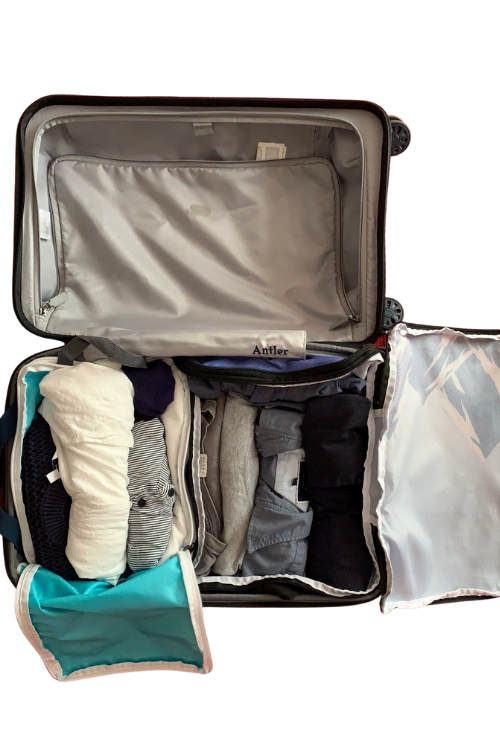

Rolled in Cube
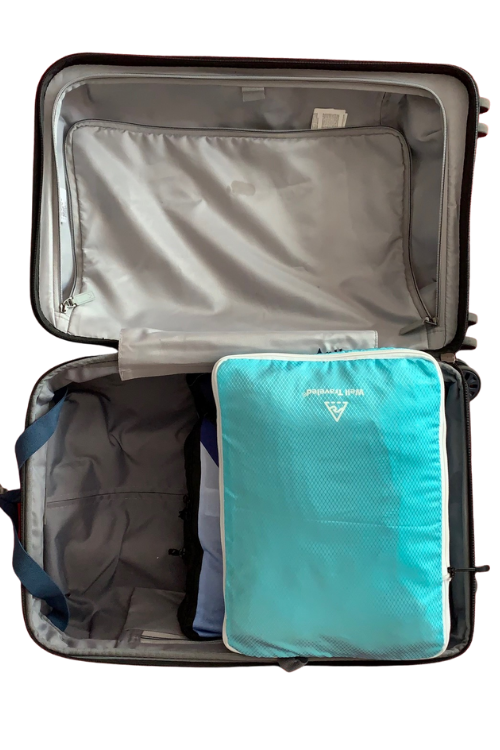

Rolled in Compression Cube
Before You Take Off
Before you even get to your departure port, a main part to help you conquer the art of packing is to ‘Know Your Limits’. This should even be done during the packing stage so you can adjust what goes in which bag. Whilst our checklists, take approximate weights into account it’s not totally infallible. That extra pair of boots may just tip the scales (speaking from experience here), and reshuffling at the departure point can be a pain for everyone.
Know your limits
As said knowing your luggage limits is an especially important aspect to conquer the art of packing. The limits referred to are weight and dimensions of your luggage, for both carry on and checked in luggage. This may vary between each mode of transport and even carriers. If in a frequent flyer program, familiarise yourself with what you are allowed for that carrier and any affiliates, you may be travelling with.
Additionally, knowing your limits and sticking to them can save time and money. As costs and time associated with extra or oversized luggage, can be inconvenient and expensive. Unless, it’s in your travel plan for special items required for your planned activities. It’s also prudent to check before booking if you can pre-purchase extra luggage. A feature offered with several carriers, that is cheaper and more time efficient than at your departure port.
Another important limit that you should know and be prepared for is liquids, aerosols and gels, especially when travelling internationally.
- no greater than 100mL
- maximum 1 litre
- fit in a bag with a total area of 800mm (e.g., 200 x 200mm or 150 x250mm) (AUS rule).
- one per passenger.
- TSA Standard 3-1-1 – rule – 3.4 ounces container or smaller- 1 x 1 quart bag – 1 per passenger
- placed separate from baggage through security screening process.
It is recommended this is actually done before getting to the security screening area. So we can fully conquer the art of packing, we do this before we even reach the airport, to expediate our way through the screening area, and store in the backpack. Always CHECK the rules before arriving at departure port.
Tip 1: If you belong to a frequent flyer programme check what limits apply to your particular tier.
Tip 2: Check all of your travel carriers before arriving at your initial departure port.
Go Bag/s
A go bag can be a life saver to conquer the art of packing, as previously mentioned all our documentation is either on our devices or in a backpack. This and our carry-on luggage are essentially is our go bags, these have everything we need to get us confidently and safely to our next stop. Including a change of clothes and minimal toiletries in the unlikely event our baggage is delayed (that’s never happened to us – yet…).
Other related articles to help with planning, budgeting and gifting…
I am always happy to reply to any comments, suggestions for next articles or a hello. You can contact me through our Social Media or at jeanine@letsgoawandering.com with any questions or comments.





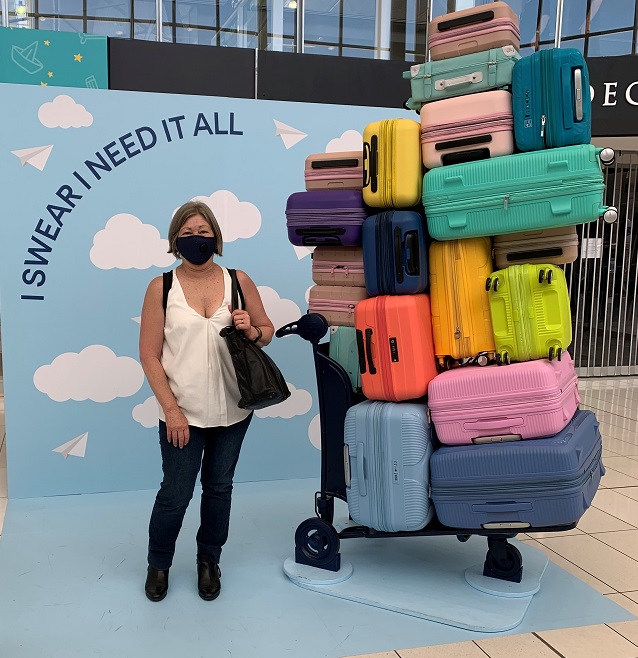
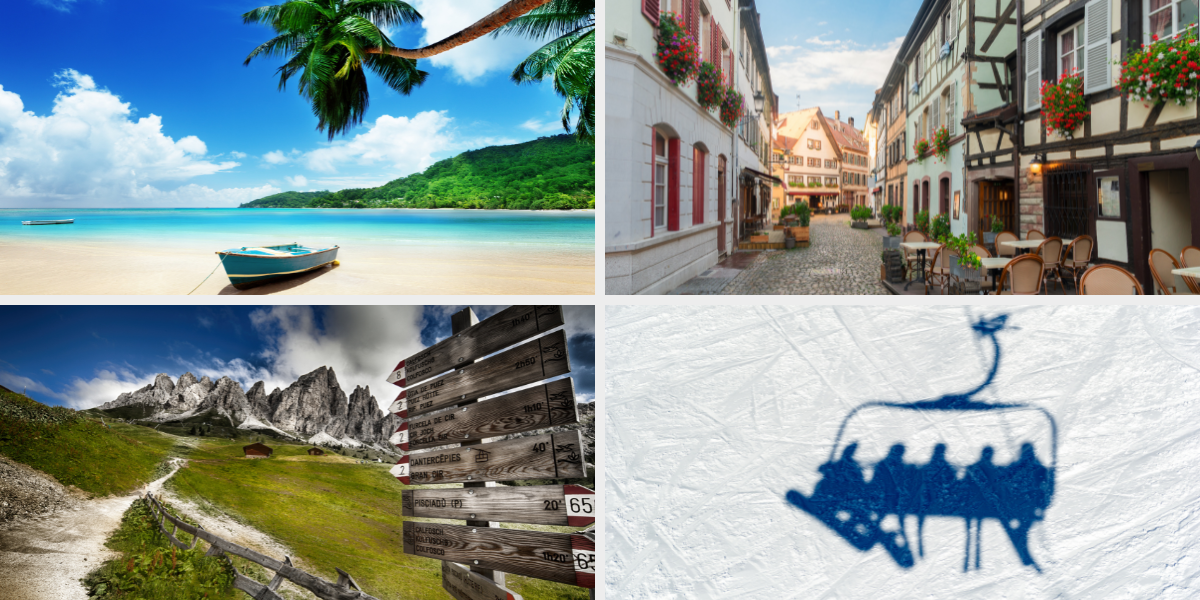
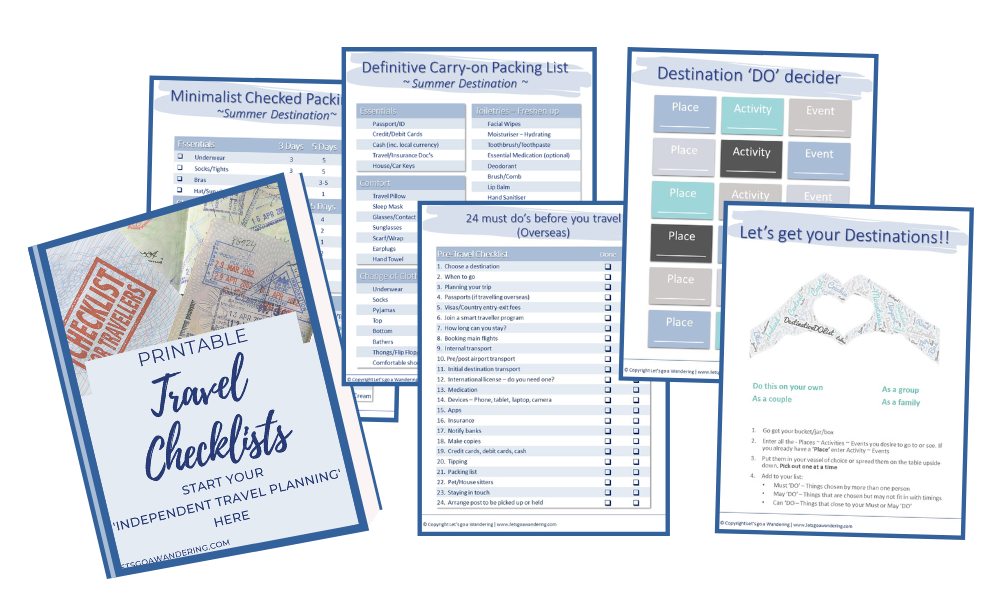
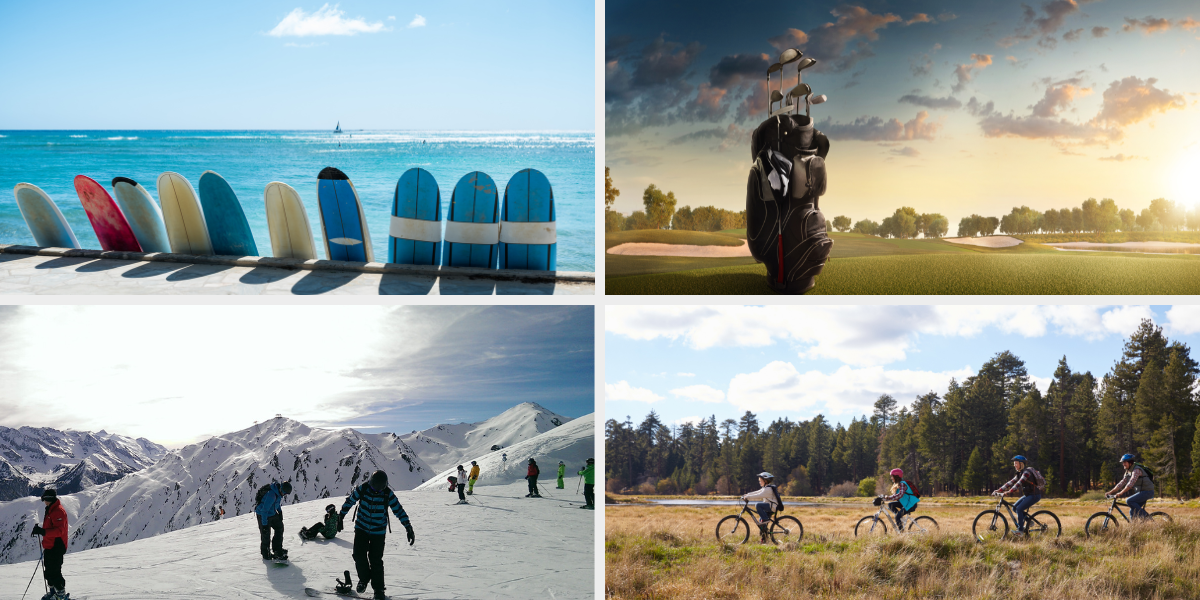

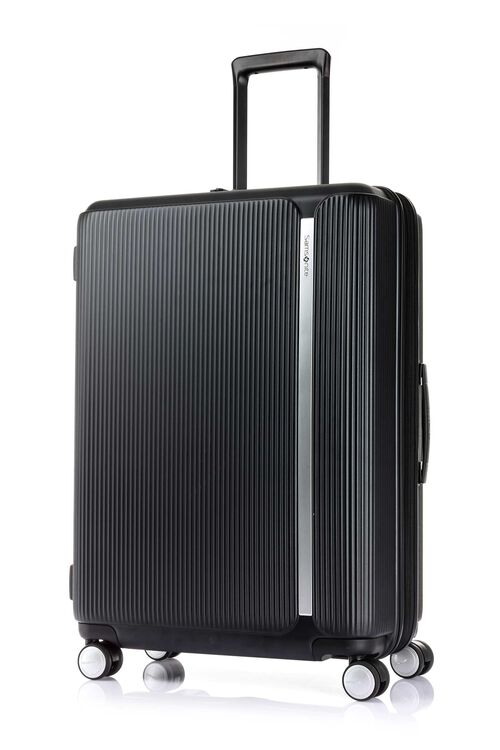

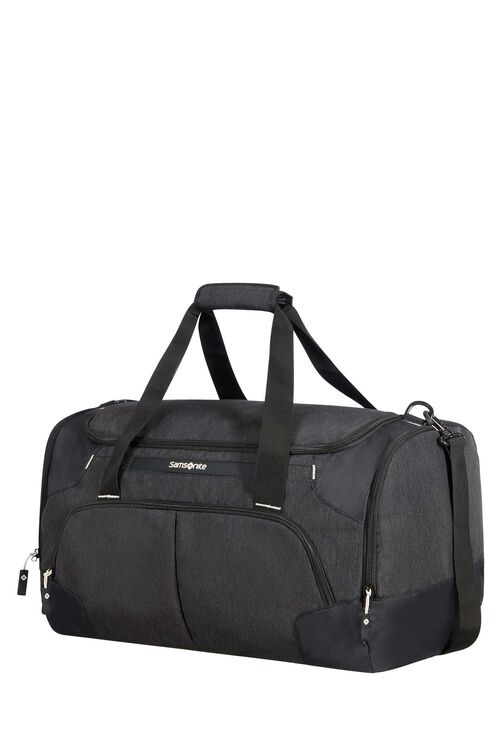
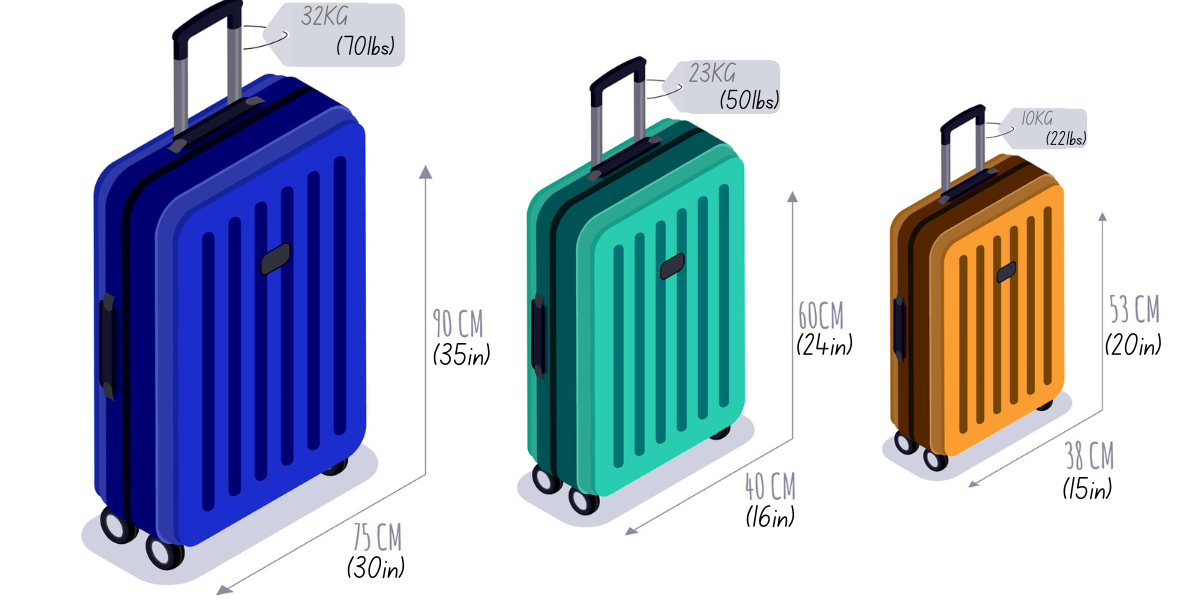
Wow, you covered a lot here Jeanine! Thanks for sharing it with us. I’m definitely team roll for my clothes though I think I need to check out the packing cubes.
Happy blogging and happy travels!
Thanks Ryan and you are welcome…Yeah for team roll, and I have found packing cubes invaluable especially the ones that compress…or a portable vacuum sealer and bags
I feel like I am always struggling to fit it all in and be organized. I’ll have to try some of your strategies!
after 20+ years of travelling I still struggle with “what to take” and my “just in case” mindset…but I am getting a lot better and the strategies work
This is such a helpful, comprehensive post! We are currently in the market for hard-shell luggage. Our soft shells are a nice, supposedly durable brand, but they are definitely beaten up after just a few flights.
Glad it helped and thank you…we had soft-shells and changed after a couple of uses for that reason…there are some hard-shell brands that are like that also, which is why we recommend the brands we have…
I’m a chronic overpacker. Great tips here. Will definitely try them out on my next trip.
Thank you…I am stilling working on my “I may just need that”, but getting closer every trip
This is such a fantastic article on the importance of selecting the right type of luggage as well as how to pack to make the most of your space while traveling. Thank you for such a great post!
Thank you it is very important and glad you liked it
Great tips, such great details I haven’t known about (and I’m travelling heaps)! I will apply the minimalistic tips for my next trip that’s where I see room for potential
Thank you I am glad this has helped and happy traveling
This is the most thorough guide to packing I have ever seen, by a long shot. So helpful!
Thank you I am so excited you think so it is more an art and practice…ha ha
I’ve never thought of it as an art before, but that explains why I’m so bad at it! : ) I love that you start out by saying it’s a work in progress. So true, you learn with every trip what works and what doesn’t. Thanks for the sharing this post!
Ha Ha I know I will be working on it till the day I stop traveling which is many years away…I will always pack that pretty dress and shoes that I mostly just won’t wear… but one day I might ha ha
What a comprehensive guide. I love the idea of using checklists. I definitely need to drill down in that area.
Thank you, I love checklists they make packing and traveling more less stressful… for me anyway ha ha
My tip is that I always have my knapsack (my preference) packed with my traveling wardrobe and other necessities (including a first aid kit). Just before traveling, I go through everything and replace or restock anything that needs to be.
That’s a great tip then you have it ready to go at a moments notice…first aid kit is also great idea
These are great packing tips, and with airlines being so particular these days, they are much needed! We also weigh our bags beforehand, and try to only buy suitcases that meet the luggage requirements.
Thank you and yes airlines are getting tighter…something to add we also weigh a few times and average… thank you for the reminder
Super timely post! I am actually packing right now for my upcoming trip to Europe. Thank you for all the great tips!
Thank you so glad it can help…especially with a trip coming up… you are most welcome
I agree with your thoughts and appreciate minimalism. We travelled with Ryanair recently and I booked 2×20 kg luggage. To my surprise, I could not bring as many bottles of wine from Italy as I wanted, even if I left a few shoes and clothes over there for next time. We concluded that we should always drive to Italy, for this reason alone!
I heard someone say once that she felt heavier a few minutes after she woke up because she was breathing and her lungs were full of air, and that showed on the scale:))) It must be the same with luggage. Damn, if I don’t suck each molecule of air out of things next time I’m packing, LOL!
Thank you and yes I always get in trouble with bringing back souvenirs…especially from Italy and Germany… The wine, the whisky, balsamic etc it’s why I maintain my points that allows me extra baggage though I would LOVE to be able to ‘drive to Italy. Driving anywhere allows for extra space to bring things back (especially wine).
Wow, packing really is an art! These are really great tips, thank you for sharing!
Thank you and yes it is such an art but you can conquer it
Love this, so many great packing tips! I prefer to take a duffel bag as it’s a lot more flexible as a carry on
Thank you…it’s all about preference…we’ve never been hindered by roller bags but if we were we’d look at alternatives…
These are great tips. I’m obsessed with my packing cubes, I’ll never be able to go back to not using them!
Ha Ha thank you and so am I and the ones that compress take it a level up